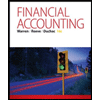
a
Introduction: Installment liquidation involves selling assets of
The preparation of statement as of June 30, 20X5 for cash distribution
a
Answer to Problem 16.18P
Cash distribution for June for partners D, S, and V are $0, $27,500 + 52,500 and $35,000 respectively.
Explanation of Solution
DSV
Cash distribution plan
July 1 20X5 to September 30, 20X5
| Loss absorption power | Capital Accounts | |||||
| D | S | V | D | S | V | |
| 50% | 30% | 20% | ||||
| Capital balances | $100,000 | $140,000 | $75,000 | |||
| LAP = Capital / P&L ratio | $200,000 | $466,667 | $375,000 | |||
| Decrease highest LAP to Next highest | ($91,667) | |||||
| Cash distribution $91,667 / .30 | ($27.500) | |||||
| $200,000 | $375,000 | $375,000 | $100,000 | $112,500 | $75,000 | |
| Decrease LAP with next | $175,000 | $175,000 | ||||
| S cash distribution $175,000 x .30 | 52,500 | |||||
| V cash distribution $175,000 x.20 | $35,000 | |||||
| $200,000 | $200,000 | $200,000 | $100,000 | $60,000 | $40,000 | |
| Balance in P/L ratio | 50% | 30% | 20% | |||
Cash distribution summary
| Creditors | Liquidation expenses | D | S | V | |
| First $405,000 | 100% | ||||
| Next $10,000 | 100% | ||||
| Next $27,500 | 100% | ||||
| Next $87,500 | 60% | 40% | |||
| Additional distribution | 50% | 30% | 20% |
b
Introduction: Installment liquidation involves selling assets of partnership in several installments. It requires several months to complete liquidation, and regular installments are paid to partners as assets get liquidated. Installment liquidation is chosen with the aim to obtain the large possible amount from the realization of the assets. It involves the distribution of cash to partners before complete liquidation of assets occurs. There are two methods for ensuring fairness and equality in making cash distributions (1) safe payment schedule and (2) cash distribution plan. For the purpose of distribution of cash a ranking partner in terms of their exposure to possible losses is carried out. It is done by preparing a schedule of assumed loss absorption.
The preparation of schedule for cash distribution in July, August and September.
b
Answer to Problem 16.18P
Cash distribution for July for partners D, S, and V is $0, $22,500 and $0 respectively.
Cash distribution for August for partners D, S, and V is $0, $13,700 and $5,800 respectively.
Cash distribution for September for partners D, S, and V is $0, $37,500 and $25,000 respectively.
Explanation of Solution
DSV
Capital account balance
June 30 20X5 to September 30, 20X5
| D | S | V | |
| Profit and loss ratio | 50% | 30% | 20% |
| Pre liquidation balance June 30 | $100,000 | $140,000 | $75,000 |
| July | |||
| Loss on disposal of asset and liquidation cost $120,000 + $2,500 | $(61,250) | $(36,750) | $(24,500) |
| $38,750 | $103,250 | $50,500 | |
| Distribution July 31 Schedule 1 $22,500 | $(22,500) | ||
| $38,750 | $80,750 | $50,500 | |
| August | |||
| Disposal of asset $13,000 and liquidation cost $2,500 | $(7,750) | $(4,650) | $(3,100) |
| $31,000 | $76,100 | $47,400 | |
| Distribution $19,500 of cash schedule 2 | |||
| S 100% | $(5,000) | ||
| Next 14,500 | |||
| S 60% of 14,500 | $(8,700) | ||
| V 40% of 14,500 | $(5,800) | ||
| $31,000 | $62,400 | $41,600 | |
| September | |||
| Loss on sale of asset $70,000 and liquidation costs $2,500 | $(36,250) | $(21,750) | $(14,500) |
| $(5,250) | $40,650 | $27,100 | |
| Distribution of D’s deficit | $5,250 | ||
| $(3,150) | $(2,100) | ||
| 0 | $37,500 | $25,000 | |
| September | |||
| Cash distribution $62,500 schedule 3 | |||
| S 60% | $(37,500) | ||
| V 40% | $(25,000) | ||
| 0 | 0 | 0 |
Schedule 1
| Amount $ | |
| Cash balance July 1, 20X5 | 50,000 |
| Cash from sale of non-cash asset | 390,000 |
| Less payment of liquidation expenses | (2,500) |
| Less payment to creditors | (405,000) |
| Less amount held for future liquidation expenses | (10,000) |
| Cash available to partners July 31, 20X5 | 22,500 |
Schedule 2
| Amount $ | |
| Cash balance August 1, 20X5 | 10,000 |
| Cash from sale of non-cash asset | 22,000 |
| Less payment of liquidation expenses | (2,500) |
| Less amount held for future liquidation expenses | (10,000) |
| Cash available to partners July 31, 20X5 | 19,500 |
Schedule 3
| Amount $ | |
| Cash balance September 1, 20X5 | 10,000 |
| Cash from sale of non-cash asset | 55,000 |
| Less payment of liquidation expenses | (2,500) |
| Cash available to partners September 31, 20X5 | 62,500 |
Want to see more full solutions like this?
Chapter 16 Solutions
ADVANCED FIN. ACCT. LL W/ACCESS>CUSTOM<
- I am looking for a step-by-step explanation of this financial accounting problem with correct standards.arrow_forwardI need help with this general accounting question using standard accounting techniques.arrow_forwardCan you help me solve this general accounting problem with the correct methodology?arrow_forward
- I am trying to find the accurate solution to this general accounting problem with appropriate explanations.arrow_forwardCan you help me solve this general accounting question using valid accounting techniques?arrow_forwardI need the correct answer to this general accounting problem using the standard accounting approach.arrow_forward
 Financial AccountingAccountingISBN:9781305088436Author:Carl Warren, Jim Reeve, Jonathan DuchacPublisher:Cengage LearningCentury 21 Accounting Multicolumn JournalAccountingISBN:9781337679503Author:GilbertsonPublisher:Cengage
Financial AccountingAccountingISBN:9781305088436Author:Carl Warren, Jim Reeve, Jonathan DuchacPublisher:Cengage LearningCentury 21 Accounting Multicolumn JournalAccountingISBN:9781337679503Author:GilbertsonPublisher:Cengage


